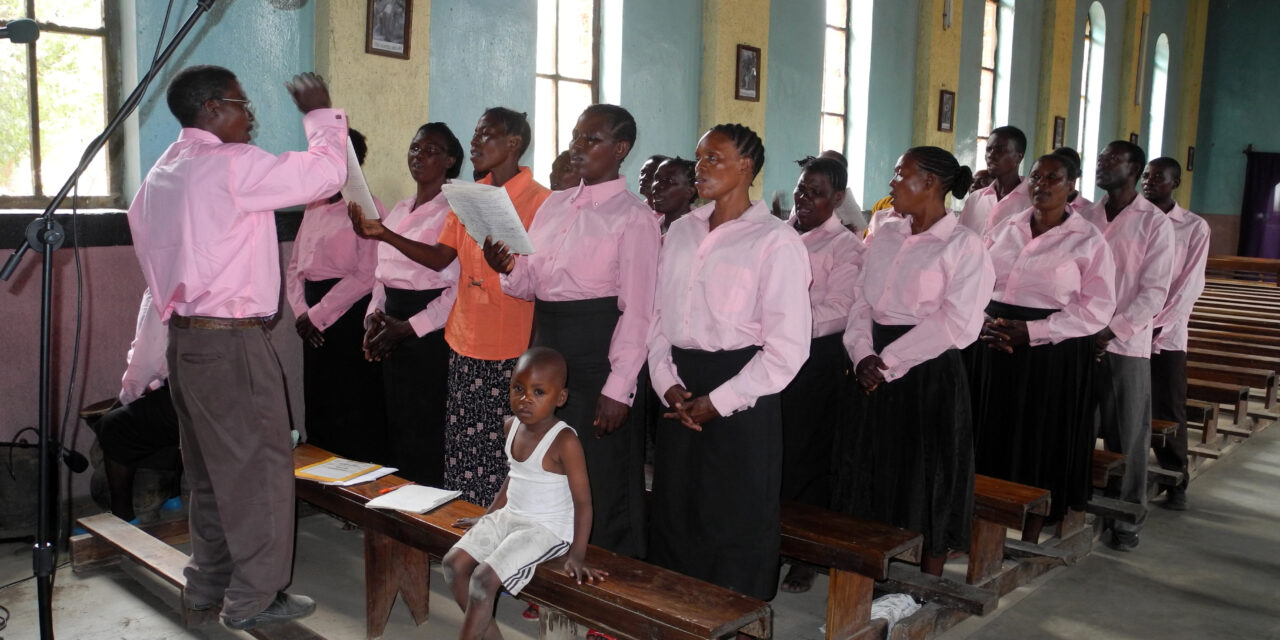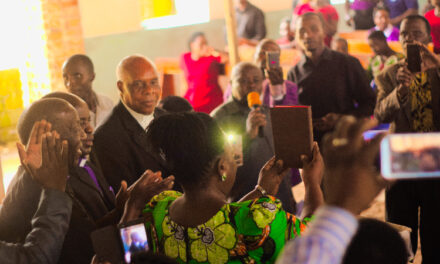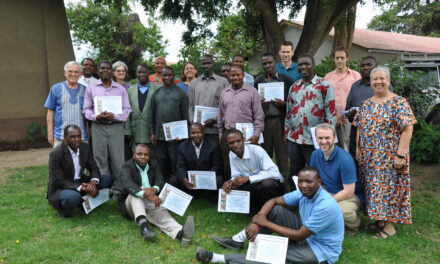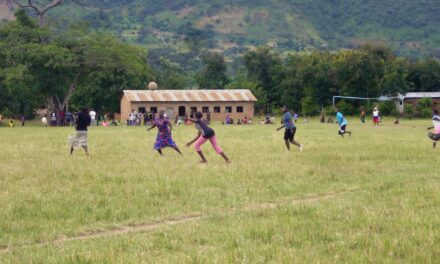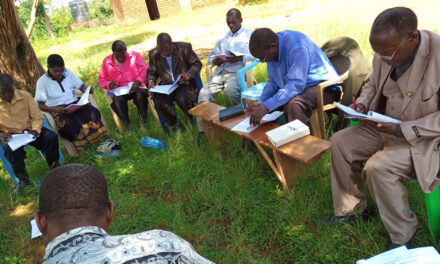Jo walked briskly to one corner of the big church. She struck her hands together sharply, listening. She repeated the process several times, as the rest of her crew unpacked microphones and cables. Despite lack of an audience, the performers had dressed smartly for today’s session — every pleat and crease was perfect. Even in this corner of Tanzania, church choirs long for the honor of being recorded.
But this day’s choir was special.
Tanzania is a country of more than 120 languages, yet most church life — preaching, teaching, and singing — happens in Swahili, the official language of commerce and government. Jo Clifford, on the other hand, records songs and Scriptures in local ‘heart’ languages. Jo and her colleagues are part of the Mbeya Cluster Project of SIL, which has linguistics and Scripture translation underway in thirteen heart languages spoken in southwest Tanzania. So today’s choir would be singing their own language, Bungu. And today Jo would be recording music from their hearts.
The day had started early for Jo. A pink sky outlined the mountain peaks which ring Mbeya, a city of truckers and farmers where the project is based. From Mbeya, a solid dirt road winds through coffee plantations and corn fields, skirting the flanks of Mbeya Peak. Beyond, a thin rolling woodland of small trees — bare now in the dry season — eventually gives way to scrub, dotted with thorny acacia and ancient baobab trees. Temperature rises as the road drops toward Lake Rukwa and the home of the Bungu people.
After a long drive, the team arrived at the church an hour after the choir. “That’s life in Tanzania,” Jo says. “No one seems to mind.” First came a tour of the parish’s egg production, followed by a look at the latest litter of pigs. There was time to sit for warm sodas served from a silver tray, to shake many hands, and to say prayers.
Meeting with the choir at last, Jo takes time (as always) to describe for them the scene from Revelation 7, where people of every tongue praise God. Though singing is hard work, even a recording session of worship can also be truly a time of worship. “I believe it will come through on their CD,” Jo explains, “if they are really worshiping.”
A choir leader is called a “chairman” in Tanzania (the Swahili means, literally, “the person with the chair”). This chairman peered intensely through silver rimmed glasses. His tie had a silver clip, worn high, just under the knot. He became briefly motionless, then raised one arm suddenly, palm down. His hand vibrated the tempo. Next, both hands begin plucking at the air — motioning to different sections of the choir, as if pulling stops on an invisible organ.
The voices seemed to soar in the tall church, as if filling a cathedral. Traditional lines of melody wove skillfully together. Chants arose like medieval prayers. Then, suddenly, in an amazing fusion with African tradition, drums began, then metal whistles followed by trilled yells, as if everyone were celebrating a wedding.
Jo was impressed with the choir’s preparation. They moved quickly through the first group of songs. All had been written or translated into Bungu expressly for this day. All had solidly worshipful themes: ‘Let Us Love All People’, ‘Come to Me All Who Are Troubled’, ‘Father Please Receive Our Gifts’, ‘I Am the True Vine, You Are the Branches.’
After the first set, everyone stopped to wipe their sweat and listen to the playback. Jo’s crew handed out bottles of water. A breeze through the tall windows felt good. Outside, a schoolboy drove a herd of goats through the churchyard. The largest stopped to scratch his hide impiously on one of the church’s front steps.
Among all the percussion instruments, only the whistle seemed store-bought. Animal skins stretched over tin buckets became drums, struck by fists or a thin branch. Soda caps strung on a wire were shaken. An empty soda bottle struck with a steel opener made a sharp, far-ringing clink. One woman twisted a three-legged stool — its leg bottoms had been shaped to scrape over the surface of an overturned earthenware cooking pot. Different sized pots achieved different sounds.
After recording came the quite serious matter of group photos for the album cover. This choir wore pink shirts with long sleeves and cufflinks. Men had black trousers. The ladies wore long, many-pleated black skirts. One of the young men broke ranks, wearing a belt woven in bands of green, gold, and red. Some stuffed their pockets with hibiscus flowers or held bougainvillea blooms.
Perhaps even more important was lunch time, sitting with church leaders on a bench under a shady tamarind tree in the center of a well-swept courtyard. Toddlers touched the guests’ foreheads. Everyone ate sweet fish and sticky ugali (a staple dish made from corn meal). There was time to talk about languages and to explain that the project’s only profit is the joy of mother-tongue worship. Today, Jo knew she was helping the choirs to lay a good foundation for future Scripture translation with the Bungu community.
Choir recordings like this are important for the project because they can be done before Scripture translation, during those first slow years while linguists build alphabets, and local speakers train as translators. An audio CD is something the community can see and hold (and hear), long before any Scripture portion gets printed. And every choir wants to produce its own recordings — it’s something that many church choirs aspire to here in Tanzania. So offering this service puts the project in very good standing in the church community.
But most of all, Jo said, it lets people know that “God speaks their language.”
This story was written for SIL Tanzania by:
Steve Pence (Language Teams Administrator, Mbeya Region)
SIL International is a global partner among academic and professional organisations which offer language development services. SIL works alongside speakers of more than 1,700 languages in over 100 countries. Active in Tanzania since 1989, the organization makes its services available to all without regard to religious belief, political ideology, gender, race or ethnolinguistic background.

